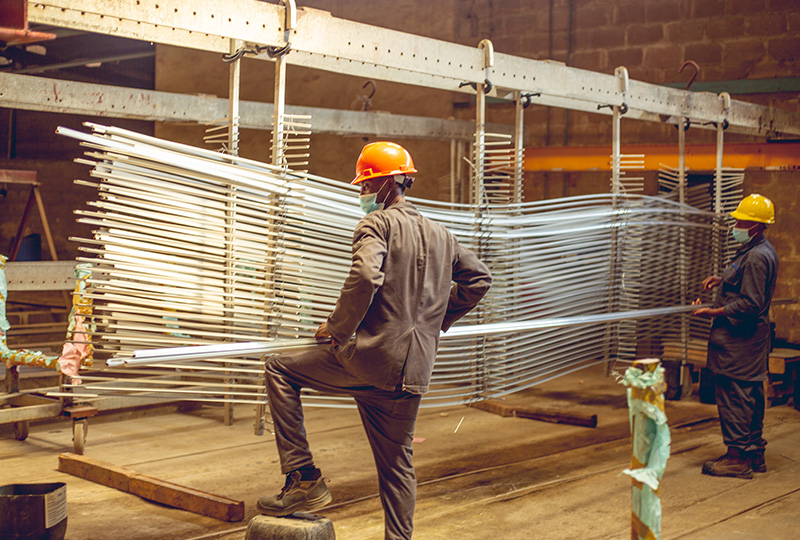Imagine a world where your favorite smartphone remains scratch-free after tumbling down the stairs, where your bike gleams like new despite years of weathering, and where architectural marvels stand strong against the harshest elements. This isn’t science fiction; it’s the reality created by anodising, a powerful yet often overlooked metal treatment.
Anodising isn’t just about creating a sleek, metallic finish (though it excels at that too). It’s about empowering everyday products with an invisible shield, a microscopic suit of armor that enhances their durability, aesthetics, and functionality. But how exactly does this process work, and what makes it so special?
A Baptism by Electricity: The Science Behind Anodising
Anodising, also known as anodizing (both spellings are accepted), is an electrochemical process. Picture this: a metal part, like an aluminium component for a smartphone, is submerged in an acidic electrolyte solution. By applying an electric current, the metal undergoes a transformation. It sheds its outermost layer and grows a new one – a tough, corrosion-resistant oxide layer. This new layer, typically aluminium oxide in the case of aluminium, acts as a barrier, protecting the underlying metal from the elements and everyday wear and tear.
While the basic concept is simple, the science behind anodising is quite intricate. The thickness and properties of the oxide layer can be precisely controlled by varying factors like the type of electrolyte, voltage, and processing time. This allows manufacturers to tailor the anodising process for specific applications.
Beyond the Bling: Unveiling the Unexpected Benefits of Anodising
Sure, anodising creates a beautiful, uniform finish that makes products visually appealing. But its true strength lies in the hidden benefits it offers:
- Enhanced Durability: Studies by the American Society for Testing and Materials (ASTM) have shown that anodised aluminium can exhibit significantly higher wear resistance compared to untreated aluminium [1]. This translates to products that last longer and require less maintenance. A 2019 report by Grand View Research estimated the global market for anodised aluminium to reach USD 28.2 billion by 2027, driven by its growing demand in industries that prioritize longevity, such as construction and transportation [2].
- Superior Corrosion Resistance: The aluminium oxide layer acts as an impenetrable barrier against corrosion, especially for products exposed to harsh environments. Research by the Aluminium Association highlights the exceptional corrosion resistance of anodised aluminium in marine environments, making it ideal for shipbuilding and offshore applications [3].
- Improved Electrical Insulation: Anodising creates a thin insulating layer on the metal surface. This makes anodised metals suitable for applications where electrical conductivity needs to be controlled, such as in electronic components. A 2021 study published in the journal “Surface Engineering” explored the potential of anodised titanium for biomedical implants due to its combination of corrosion resistance and electrical properties [4].
- Unmatched Color Versatility: Contrary to popular belief, anodising isn’t limited to a silver finish. The porous nature of the oxide layer allows for vivid and long-lasting dye absorption. This opens a world of possibilities for creating aesthetically pleasing and color-coded products. A report by Wood Mackenzie Chemicals suggests that the demand for colored anodised aluminium is expected to rise in the architectural and consumer electronics sectors due to its unique blend of functionality and aesthetics [5].
Beyond Aluminium: Unveiling the Anodising Universe
While aluminium is the most commonly anodised metal, the process can be applied to other metals as well. Titanium and magnesium, for example, can also benefit from anodising, offering similar advantages in terms of durability and corrosion resistance. This versatility makes anodising a valuable tool for a wide range of industries.
The Untold Story: Environmental Considerations and Sustainable Practices
Anodising is generally considered an environmentally friendly process compared to traditional metal finishing techniques like painting or plating. However, some traditional anodising methods, particularly those using chromic acid, raise environmental concerns. The good news is that the industry is constantly innovating. Sustainable anodising techniques using alternative electrolytes are being developed to minimise environmental impact.
The Future of Anodising: A Material Science Revolution
The future of anodising is bright. Researchers are exploring ways to further enhance the properties of anodised metals. This includes creating self-healing and self-lubricating oxide layers, pushing the boundaries of wear resistance, and even incorporating antibacterial properties. As research progresses, we can expect anodised metals to play an even more significant role in various fields, from aerospace and automotive engineering to medical implants and sustainable construction.
Anodising: The Silent Guardian of Everyday Products
So, the next time you admire the sleek finish of your smartphone or marvel at the architectural grandeur of a modern building, remember the invisible shield
